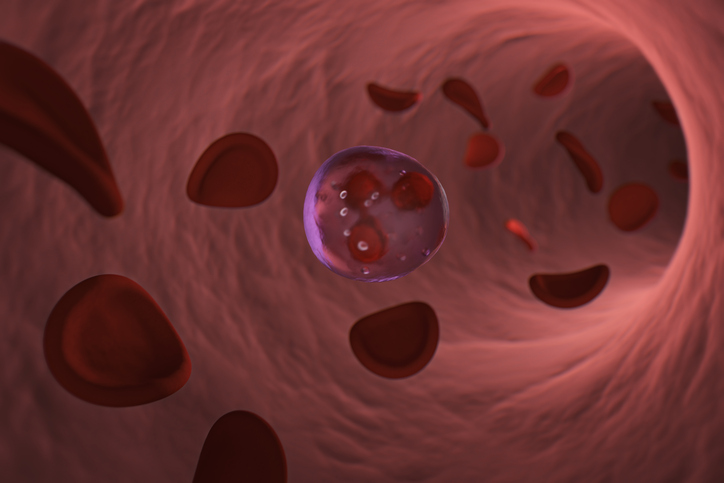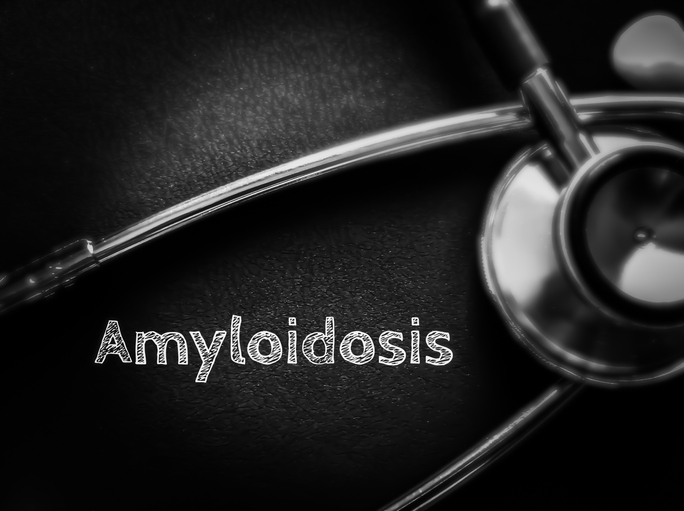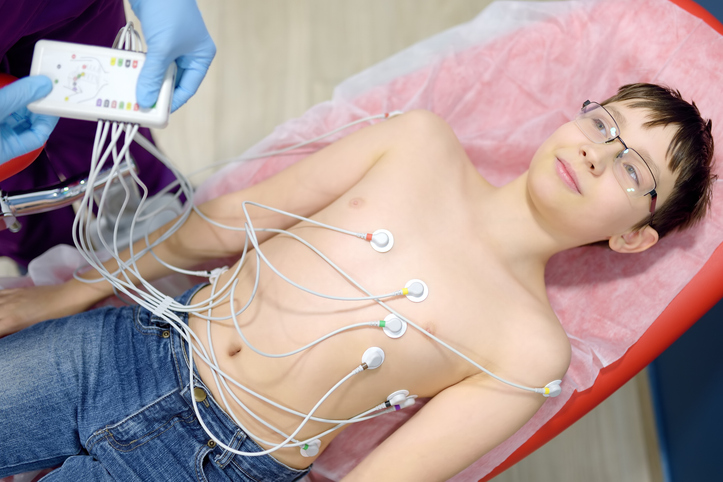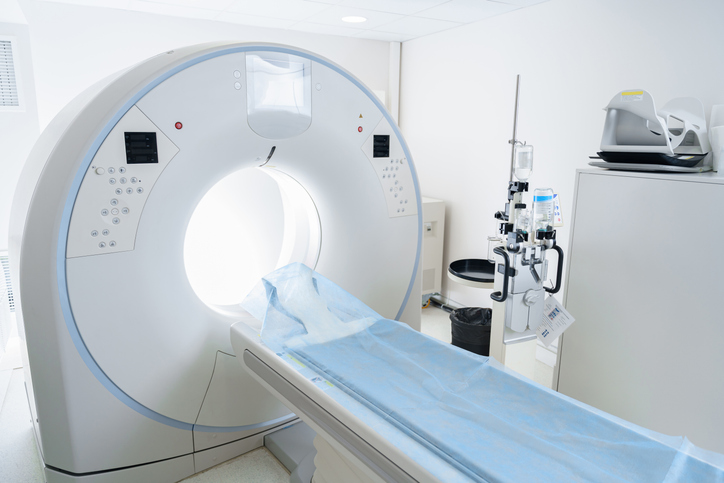
The medical devices used to monitor and treat patients with cardiac arrhythmias—including cardiac resynchronization therapy (CRT) devices, implantable cardiac defibrillators (ICDs), and pacemakers—are referred to as Cardiac Implantable Electrical Devices (CIED). Over the years, advancements in CIED technology have improved quality of life and survival for cardiac patients, although the permanent implantation of these devices introduces risk for certain complications.
One such complication is CIED infection. These infections, which can begin in the device pocket or in the blood stream, are associated with a significant increase in mortality and medical costs and a significant decrease in quality of life.1 Prior studies have reported that device infections are not altogether uncommon, with an overall CIED infection rate of 6.2% at 15 years and 11.7% at 25 years after CIED implantation.2
Based upon professional society recommendations from the Heart Rhythm Society 2017 consensus statement and European Heart Rhythm Association 2020 infection guidelines, a confirmed CIED system infection is a Class I (strong) indication for referral to a device extractor and subsequent complete device and lead removal.3,4 This directive is mirrored in the American Heart Association, British Heart Rhythm Society, and European Society of Cardiology (ESC) guideline recommendations, with all but the ESC guideline specifying “prompt” extraction.5-7
However, according to a late-breaking study presented at the 2022 American College of Cardiology Scientific Sessions & Expo, 81.8% of a cohort of over one million Medicare patients with confirmed CIED infections did not receive the guideline-directed complete extraction. Critically, earlier extraction was associated with better outcomes.8
The Largest Ever Real-World Analysis of CIED Infections
One of the study’s authors, Jonathan Piccini, MD, MHS, Director of Cardiac Electrophysiology at Duke University, spoke to JACC about the study’s design and its findings. He noted that the study and analysis was motivated by the relative frequency of CIED infections. Additionally, the study was also motivated by some data from single centers that suggests treatment is occasionally delayed and that delayed treatment may lead to worse outcomes.
“Given all of those factors, we wanted to look at a very large, representative, and nationwide population, if you will,” Dr. Piccini explained. “We decided to use the Medicare data to ask, how often do people get device infections more than one year after the device is implanted? How are those device infections managed? Are they managed according to best guideline recommendations? Finally, we also wanted to understand if there a relationship between the time it takes to definitively treat the infection (with extraction) and subsequent outcomes?”
Medicare fee-for-service Part D participants with de novo CIED implants were followed for CIED infections occurring more than 12 months after the implant, defined as endocarditis or implant infection plus the documented use of intravenous antibiotic therapy within 30 days of infection. The primary measures of the study were device infection diagnosis, device extraction, time to extraction, and all-cause mortality. Associations between extraction and mortality were analyzed with time-varying multivariable Cox models.
In total, the analysis included 1,065,549 Medicare fee-for-service Part D participants with de novo CIED implants. “These are not what you might describe as ‘straightforward’ patients—the average age was 75, 68% of the patients with infection had diabetes, 87% of patients had a heart failure, and 70% had lung disease,” Dr. Piccini described.
Infection, Extraction, and Mortality Rates
Over a median of 4.6 years of follow-up, the authors identified 11,619 CIED infections, for a total cumulative incidence of 1.1%. The cumulative incidence of infections at one-, two-, and three-years post-implant was 3,521 (0.3%), 5,802 (0.6%), and 9,564 (1.1%), respectively, and infections developed at a mean of 3.7 ± 2.4 years after implantation. Additionally, female patients and Black patients were less likely to undergo device removal.8
Despite the vulnerability of these patients, the study’s analysis showed that only one in five patients underwent complete hardware removal—a finding which was surprising to Dr. Piccini and colleagues. “When I finished my training, if you had asked me, ‘Jon, what percentage of patients with a diagnosis of device infection get complete hardware removal?’ I would have told you that probably 75 to 100% of them did. We were very shocked to see that only 20% were getting complete hardware removal” Dr. Piccini commented.
Furthermore, the investigators found that some of the extractions were not always prompt as some treatment guidelines recommend. Notably, 81.8% (N = 9,510) of patients did not undergo extraction within 30 days. Among those who did, 5.1% (N = 594) underwent extraction within seven to 30 days of diagnosis, and 13% (1,515) underwent extraction within six days of their diagnosis.8
Regarding the association between time to extraction and mortality, the investigators found that earlier extraction was associated with lower mortality (hazard ratio, 0.73; 95% confidence interval, 0.7-0.81).8 “Patients who had extractions performed within six days had a 42.9% lower adjusted risk of death compared to patients who did not have extraction,” Dr. Piccini added.
Dr. Piccini pointed out that these findings are similar to findings with other infections like pneumonia and septic shock, where the sooner a patient receives treatment, the better their outcomes. “The primary point is that, once a device infection is diagnosed, the patient requires guideline-recommended therapy in a prompt and quick fashion. Is there a magic number? You know, one week, six days, five days? No, but the sooner the better.”
Why is CIED Infection Undertreated
Dr. Piccini discussed the factors potentially driving the lack of complete device removal, such as the complexities involved in reaching a definite diagnosis of CIED infection.
“Some patients can present with a fever and redness over their device site, but some patients may present with fatigue and a general sense of feeling unwell. … If you look at a large series of patients with device infections, their presenting symptoms are often very different from one another,” Dr. Piccini stated.
Additionally, he noted that patients may present to a primary care physician or general cardiologist who does not deal with this complication frequently. These patients may not present to the physician who implanted their device or is familiar with device care, further compounding the challenge of swift diagnosis and treatment.
Moreover, even after device infection is suspected, reaching a definite diagnosis is still not straightforward. “There are several different categories of diagnostic findings that are categorized as minor and major criteria and the ultimate diagnosis. Said differently, there’s no one gold standard for diagnosing this problem, and that’s another reason it’s challenging,” according to Dr. Piccini.
However, given that all of the participants in the study had confirmed diagnoses of CIED infection, there must be additional factors influencing the lack of guideline adherence seen in the study. In some cases, resource availability and lack of specialty services could be part of the problem.
Complete hardware removal requires a trained device extractor, and not all heart rhythm physicians or surgeons are device extractors, Dr. Piccini explained. In addition, the extraction procedure often requires the presence of cardiopulmonary bypass or a hybrid operating room, which may not be readily accessible or available, potentially leading to restrictions or delays in treatment.
A lack of proper infrastructure to extract the CIED may lead physicians to defer complete extraction in favor of an initial treatment with antibiotics. “There’s often a tendency or a temptation to say, ‘Well, let’s just try antibiotics alone and see what happens.’ That is one of the challenges,” Dr. Piccini said. “Frequently, patients are treated with antibiotics for a period of time, and then if the infection still persists, then they undergo extraction. But we know … from other studies and these nationwide data that delay in treatment is associated with worse outcomes.”
Ultimately, “some of it may be availability of services, some of it may be diagnosis, some of it may be delays and getting those resources collected and organized for that particular patient. So, the most important question, how can we do better?”
How We Can Improve: Awareness and Education
Dr. Piccini also identified opportunities for improving the clinical care of CIED infection. “Right now, the American Heart Association has kicked off an infection awareness campaign to try and raise awareness of this problem and lead to more prompt diagnosis and guideline directed treatment,” he said. “There’s also a quality improvement pilot that’s being led by one of my colleagues, Dr. Sean Pokorney. [This pilot] is going to look at three institutions across the United States and examine how patients present with these infections and try and quantify barriers to timely care and how those barriers might be deconstructed so that patients can get the therapy they need quicker, with better outcomes.”
Patient and physician education are also key, according to Dr. Piccini. He mentioned how potential knee replacement patients typically receive education (including mandatory classes in some health systems) about risks and benefits of the procedure and potential signs of infection. For patients, Dr. Piccini highlighted Upbeat.org, a patient resource center from the Heart Rhythm Society. The site has instructions on signs and symptoms of CIED infection and what to do if a patient believes they may have a device infection.
Turning to the healthcare delivery side of the problem, “another opportunity is harnessing the electronic medical record and other tools we have in 2022 to try and improve care,” Dr. Piccini proposed. “There are electronic medical record programs that can identify when a patient with a pacemaker has a positive blood culture and automatically flag that patient’s chart for review by an infection or extraction specialist to make sure no one ‘slips through the cracks.’ … The good news is that there are several tools available to us to improve care that we didn’t have, say, 10 years ago.” Dr. Piccini also advised that conducting a thorough evaluation of a patient’s device pocket for subtle signs of infection during routine follow-up is highly important.
Lessons and Takeaways
Though the study revealed a concerning level of undertreatment among patients with CIED infections, the investigators saw this as a clear, actionable area to improve. Dr. Piccini summarized that, “this study highlights the life-threatening nature of device infections and the significant opportunities to improve care in these complex patients. The findings also emphasize the importance of timely diagnosis and complete treatment.”
He posited that effective improvements for tomorrow’s patients will require cross-disciplinary collaboration today to improve awareness, education, diagnosis, and timely care of CIED infections. “The opportunity to ensure all patients have access to guideline recommended care is not only imperative, but life-saving for patients across the world.”
Learn more at deviceinfection.com
References:
- Wilkoff BL, Boriani G, Mittal S, et al. Impact of cardiac implantable electronic
device infection: a clinical and economic analysis of the wrap-it trial. Circ
Arrhythm Electrophysiol. 2020;13(5):e008280. doi:10.1161/CIRCEP.119.008280 - Dai M, Cai C, Vaibhav V, et al. Trends of cardiovascular implantable electronic
device infection in 3 decades: a population-based study. JACC Clin
Electrophysiol. 2019;5(9):1071-1080. doi:10.1016/j.jacep.2019.06.016 - Kusumoto FM, Schoenfeld MH, Wilkoff BL, et al. 2017 HRS expert consensus
statement on cardiovascular implantable electronic device lead management
and extraction. 2021 Oct;18(10):1814. Heart Rhythm. 2017;14(12):e503-e551.
doi:10.1016/j.hrthm.2017.09.001 - Blomström-Lundqvist C, Traykov V, Erba PA, et al. European Heart Rhythm
Association (EHRA) international consensus document on how to prevent,
diagnose, and treat cardiac implantable electronic device infections-endorsed
by the Heart Rhythm Society (HRS), the Asia Pacific Heart Rhythm Society
(APHRS), the Latin American Heart Rhythm Society (LAHRS), International
Society for Cardiovascular Infectious Diseases (ISCVID) and the European
Society of Clinical Microbiology and Infectious Diseases (ESCMID) in
collaboration with the European Association for Cardio-Thoracic Surgery
(EACTS). Europace. 2020;22(4):515-549. doi:10.1093/europace/euz246 - Baddour LM, Epstein AE, Erickson CC, et al. Update on cardiovascular
implantable electronic device infections and their management: a scientific
statement from the American Heart Association. Circulation. 2010;121(3):458-
477. doi:10.1161/CIRCULATIONAHA.109.192665 - Sandoe JA, Barlow G, Chambers JB, et al. Guidelines for the diagnosis,
prevention and management of implantable cardiac electronic device
infection. Report of a joint working party project on behalf of the British
Society for Antimicrobial Chemotherapy (BSAC, host organization), British
Heart Rhythm Society (BHRS), British Cardiovascular Society (BCS), British
Heart Valve Society (BHVS) and British Society for Echocardiography (BSE). J
Antimicrob Chemother. 2015;70(2):325-359. doi:10.1093/jac/dku383 - Habib G, Lancellotti P, Antunes MJ, et al. 2015 ESC Guidelines for the
management of infective endocarditis: the task force for the management of
infective endocarditis of the European Society of Cardiology (ESC). Endorsed
by: European Association for Cardio-Thoracic Surgery (EACTS), the European
Association of Nuclear Medicine (EANM). Eur Heart J. 2015;36(44):3075-3128.
doi:10.1093/eurheartj/ehv319 - Pokorney S. Low rates of guideline directed care associated with higher
mortality in patients with infections of pacemakers and implantable
cardioverter defibrillators. Presented at: American College of Cardiology 71st
Annual Meeting; April 2022; Washington, DC.
This article originally appeared in the September 2022 issue of JACC: Clinical Electrophysiology. The content was developed by AMC Media Group in conjunction with and sponsored by Philips, independently from the content developed for JACC EP. Inclusion in this publication does not constitute a guarantee or endorsement by the American College of Cardiology (ACC), nor do statements or opinions expressed represent official ACC opinions or policies. Patrick Daly is an editor for AMC Media Group.







 © 2025 Mashup Media, LLC, a Formedics Property. All Rights Reserved.
© 2025 Mashup Media, LLC, a Formedics Property. All Rights Reserved.